Home-Trailer-Ita-Eng-Compra/Buy-Libro-News-Press-Links@@
From dobianchi.com
Italy Day 2: Bartolo’s Beret - April 19, 2008
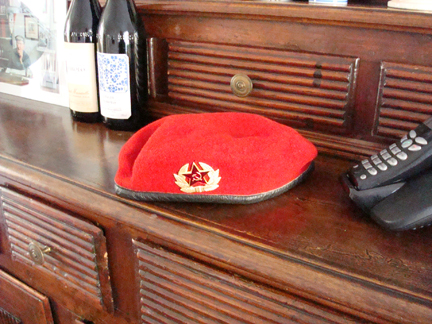
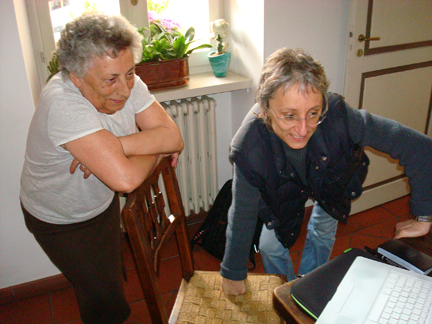
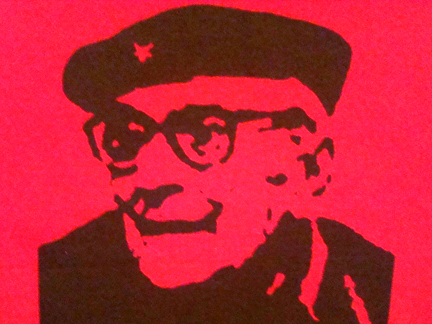
Although she was happy to learn that her father has achieved cult status in the über-hipster wine culture of lower Manhattan and she liked the allusion to Che Guevara, Maria Teresa Mascarello (Bartolo’s daughter) told me that the beret pictured in the Terroir wine bar t-shirt below is a photomontage. Maria Teresa didn’t know about the tee until someone printed out a copy of my post Is Mascarello the New Che Guevara? and brought it to her (she doesn’t use the internet). When I got back to NYC, I put in a call to Paul Grieco, owner of Terroir, who sells the tee. But he never called me back. I guess I’ll just have to go buy a t-shirt and send it to Maria Teresa myself.
Maria Teresa and her mother Franca (below, left) concluded that the Terroir t-shirt (below) is a photomontage.
Italy Day 2…
On April 2, I awoke in the guest room of the Castello di Zumelle, the fairy tale serenity of the Piave river valley broken only by the sound of a rooster’s cock-a-doodle-do in the distance. I bid the Dalpiva family farewell and headed south to the A4 autostrada and then west toward Piedmont and the Langhe hills where I had an appointment with Maria Teresa Mascarello of the famed Bartolo Mascarello winery, ardent defender of traditionally made, blended (as opposed to single-vineyard) Barolo.
When I showed Bartolo’s wife Franca and Maria Teresa an image of the Bartolo Mascarello t-shirt, they couldn’t get over the fact that Bartolo’s physiognomy has taken on such an aura in the U.S. They loved it. (In the photo above, they are viewing an image of the t-shirt on my laptop.) They also greatly appreciated the text written on the verso of the tee, “Bartolo Mascarello, my wine revolution…”
Before we went to tour the cellar and taste some wines together, Maria Teresa told me that her father only allowed her to install a phone in their home and adjoining winery in 1989, “after the Berlin wall fell.” He insisted that the phone be listed not under the winery’s name but rather in Maria Teresa’s name, as it remains today.
As we were tasting the 2004 Barolo, the cellar master came up to the tasting room and brought us a taste of the 2005: they had just finished blending the wine in that instant and we were literally the very first to taste it. What a thrill… (I’ll be posting a tasting note together with a profile of the Bartolo Mascarello winery next week on VinoWire.com.)
Above: a collection of old bottles in the Bartolo Mascarello cellar.
From "New York Times"
Bartolo Mascarello, winemaker of Italy
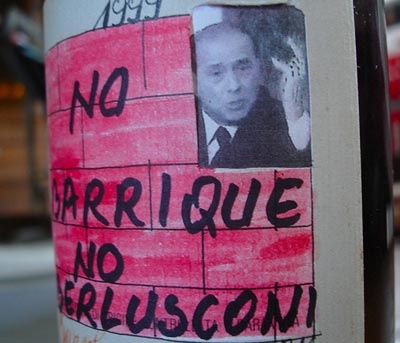
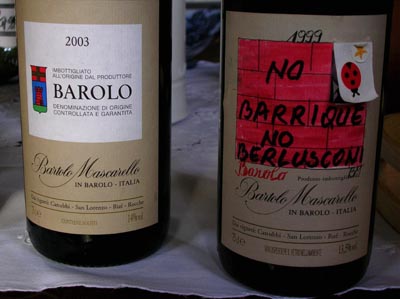
Bartolo Mascarello, a Barolo winemaker whose enduring adherence to traditional practices in the face of changing fashions made him a symbol of staunch loyalty, died Saturday at his home in the town of Barolo, Italy. He was 78.
The cause was cardiac arrest, said his daughter, Maria-Teresa.
Italian winemaking underwent profound changes in the past 40 years, but Mascarello refused to swim with the tide, clinging tenaciously to the methods of his forebears, who taught him how to make wine.
"I'm loyal to the tradition of my father and my grandfather," he said in an interview in 2003. "I don't want to throw that away to make wine as they make it in Australia and Chile and Sicily." For years, Mascarello's unyielding stance branded him as a has-been among some of his peers and Italian wine critics. But in the late 1990s, the trends began to turn back his way, and his wines began to receive critical acclaim.
"We never went with the trends, and we suffered," said Maria-Teresa Mascarello, who assisted her father for many years. "The press would speak well of them and attack us as people who couldn't keep up with the times."
Barolo is produced from the nebbiolo grape in the hills of Langhe, in the Piedmont region of northwestern Italy. Unlike cabernet sauvignon, chardonnay or pinot noir, which produce fine wines all over the world, nebbiolo refuses to flourish anywhere else.
In their youth, Barolo and its sibling wine, Barbaresco, are classically austere and tannic. But as they age, the tannins soften, releasing gorgeous, earthy flavors often described as tar, licorice, truffles, violets and roses. This evolution sometimes requires a decade or more.
In the last third of the 20th century, many Barolo producers sought to speed up this process. Traveling around the world, they tasted other wines and noted the public's taste for softer, fruitier wines that were enjoyable at an earlier age. They adopted the techniques of the French and the Americans, spurning the traditional botti, or big barrels, in favor of barriques, the French term for small oak barrels, which impart a more supple tannin.
From Ken Vestola page
Notes, History, and Other Labels
- The winery was founded as "Cantina Mascarello" on January 1, 1920, by Bartolo's father, Giulio Mascarello, according to A Wine Atlas of the Langhe. He was assisted by his father, Bartolomeo, who was the cellarman at the Cantina Sociale in Barolo. Giulio was born in Barolo in 1895 and died in 1981. Just after World War II, he served as mayor of the town of Barolo. He was a pioneer as a small grower/producer of high quality Barolo.
- Bartolo Mascarello was born in 1926 and died on March 12, 2005. He joined his father in winery in the 1960s and became a ledgend in his own right. Beginning in the mid-1990s, ill-health kept him out of the vineyards. This is when he began hand-drawing labels. He was an icon of traditional Barolo making.
- Today, the winery is run by Bartolo's daughter Maria Teresa, with help from her mother Francesca.
- More information about the winery and family can be found here.
- Facts about vineyards:
o The original vineyard was a 1.9 acre (0.8 hectare) plot in the Monrobiolo vineyard, also known as Bussia di Barolo since it is adjacent to Bussia, but in the commune of Barolo. For quite some time, Mascarello's plot here has been planted entirely to Dolcetto.
o In the 1930s, Giulio purchased more land; first in Cannubi (2.8 acres = 1.1 hectares), then in San Lorenzo (0.9 acres = 0.4 hectares) and Rue' (1.9 acres = 0.8 hectares), all in the commune of Barolo.
o Finally, they bought a 4.7 acre (1.9 hectare) plot in Rocche di Torriglione dell'Annunziata in the Commune of La Morra. This plot had been owned by a family member who sold them grapes.
o Mascarello's plots in Cannubi, San Lorenzo and Rocche are planted entirely with nebbiolo, while Rue' has both nebbiolo and dolcetto planted.
o In some vintages (up to and including 1980), both a non-riserva Barolo and a Barolo Riserva were made. In these cases, these wines may have been bottled at different times, but from the same lots of wine. So the only difference between a "Barolo" and a "Barolo Riserva" is that the Riserva spent more time in cask.
o According to the website of the Ordine dei Cavalieri del Tartufo e dei Vini di Alba the following Bartolo Mascarello Barolos have been bottled under their label (as well as his own):
o In 1969, it seems that Cantina Mascarello also made a Barbaresco.
From Shop Wine and Dine - A wine travel blog
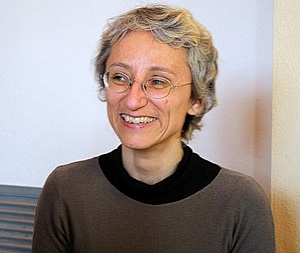 Eccomi finalmente*, begging forgiveness for this long hiatus between postings.
Eccomi finalmente*, begging forgiveness for this long hiatus between postings.
Over the last spring and summer I had planned to travel to Piemonte in April and May but thanks to the volcano eruption in Iceland last April that prevented 10 out of a group of 14 from reaching Piemonte, I actually had to travel there again last June and immediately following off to amazing Friuli Venezia Giulia with another group.
Each trip was absolutely perfect and accompanied by my terrific travel companions, I was grateful for the opportunity to visit top estates such as Angelo Gaja, Bartolo Mascarello, Bruno Giacosa, Aldo Conterno, Paolo Scavino, Giacomo Conterno, La Spinetta, Luciano Sandrone and Oddero in Piemonte; Radikon, Gravner, Jermann, and Fantinel in Friuli and finally Movia in Slovenia. In the coming weeks I will share stories and photos from these trips that I hope will be of interest but for now, I must continue with our Amazing Women of Piemonte series.
Our next featured woman winemaker is Maria Teresa Mascarello, who since her father’s demise has had to fill some pretty big shoes in becoming the winemaker at Bartolo Mascarello.
But regardless of her shoe size, Maria Teresa is becoming a giant in her own right!
Sign to Barolo
For most of us, our life’s journey is seldom straight but full of unexpected twists and turns that hopefully will lead to the fulfillment of our destiny. Such is the road that Maria Teresa Mascarello has followed throughout her life and if the saying “all the roads lead to Rome” is true, for Maria Teresa all the roads have led her to her beloved Barolo!
As a little girBarolo Vineyardsl, her grandfather would take her on his motorino* through their vineyards, while passionately speaking of the land and its magical, perfect harmony with the environment.
Her home was often a meeting point for many legendary winemakers as well as passionate consumers who would flock to see Bartolo Mascarello hoping to purchase their “yearly allotment” of the prized Barolo wine.
But Maria Teresa’s studies at the University of Torino were in linguistics and indeed, much to her mother’s consternation, until her twenties she never even tasted a drop of wine! However wine was very much in her sub-conscious and drawing on her family’s wine making traditions, by presenting her thesis on “Wine and Oenology in French Dictionaries”, her faith was sealed.Maria Teresa in Mascarello Tasting Room
Maria Teresa’s winemaking responsibilities began in 1998 and nurtured by her legendary father Bartolo, she committed herself to protecting the land, safeguarding the values and the legacy transmitted to her by her family.
Under Bartolo’s tutelage hers was an “on the job training”, assimilating the precious and practical knowledge that her father imparted about the land, the vineyards and the wine.
Such teachings-the practice of honoring the natural process of fermentation which she equates to “a resting period” for the wine that should not be in any way disturbed or the affinamento* of the wBarolo Magnumsine in large, Slavonian oak barrels as continuing to make her Barolos not as a single vineyard cru but as an assemblage from seven acres of estate vineyards, were instrumental in forging her own commitment to traditional wine-making practices. Similarly, her decision not to purchase other parcels of land, in order to maintain the same levels of production and the estate within dimensioni umane*, thus ensuring strict quality control.
Following her father’s illness and subsequent inability to take on an active role in the vineyards and wine-making, Maria Teresa’s ascendancy to the role of wine-maker was rather smooth. By then it was quite normal to have women at the helm of top estates and she did not feel any resistance on Bartolo’s part to let go of the reins. While he dedicated himself to drawing the now famous labels through which he often conveyed his personal and political views, he became Maria Teresa’s de-facto consigliere*, always ready to impart whatever advice his daughter asked for but without interfering with the process.
Langhe Doc
Una produzione/ Produced by Stuffilm Creativeye
Distribuito da/ Distributed by Produzioni Fuorifuoco
www.produzionifuorifuoco.it
info@produzionifuorifuoco.it